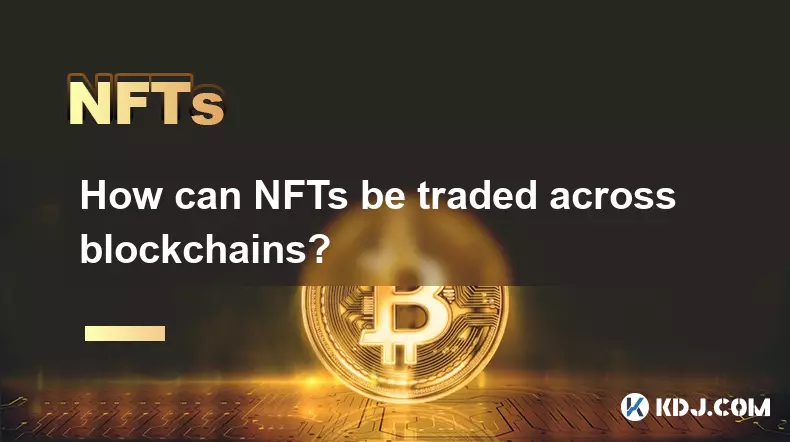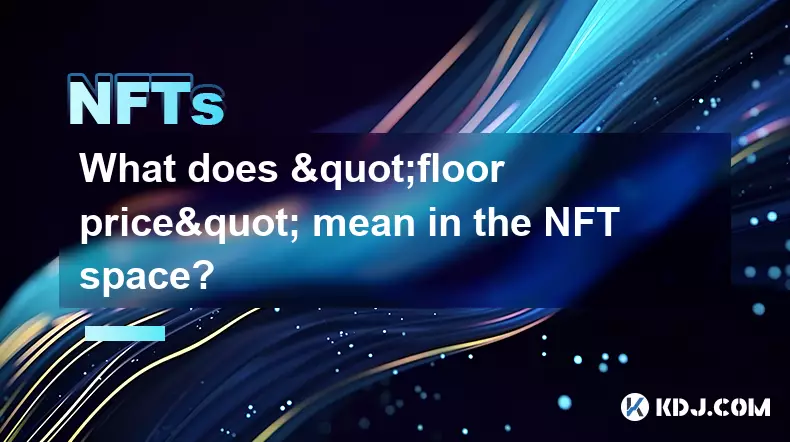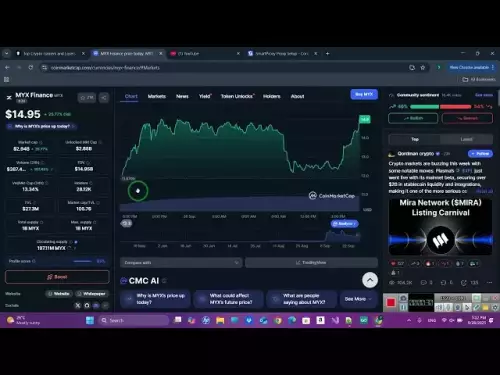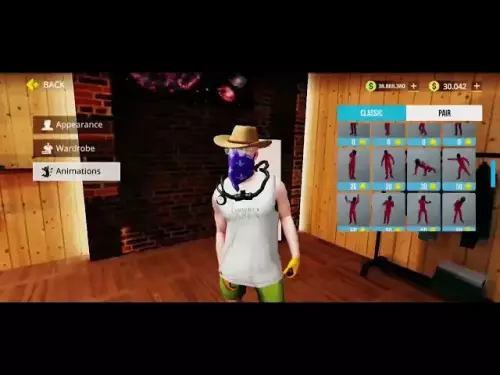-
 bitcoin
bitcoin $109547.008142 USD
0.04% -
 ethereum
ethereum $4011.838726 USD
-0.05% -
 tether
tether $1.000402 USD
-0.01% -
 xrp
xrp $2.798606 USD
0.88% -
 bnb
bnb $970.877944 USD
1.39% -
 solana
solana $202.237275 USD
-0.95% -
 usd-coin
usd-coin $0.999673 USD
0.00% -
 dogecoin
dogecoin $0.229294 USD
-1.15% -
 tron
tron $0.336370 USD
-0.45% -
 cardano
cardano $0.777260 USD
-1.66% -
 hyperliquid
hyperliquid $45.503019 USD
1.73% -
 ethena-usde
ethena-usde $1.000362 USD
0.01% -
 chainlink
chainlink $20.785303 USD
-1.10% -
 avalanche
avalanche $28.755822 USD
-0.11% -
 stellar
stellar $0.358303 USD
-0.48%
How can I use tools to track the movements of NFT whales?
NFT whales, holding large quantities of high-value NFTs, influence market trends and prices; tracking their on-chain activity via tools like Nansen, Dune, and Etherscan helps investors anticipate shifts and spot opportunities.
Aug 08, 2025 at 01:15 pm

Understanding NFT Whales and Their Market Impact
NFT whales are individuals or entities that hold large quantities of high-value NFTs or possess significant financial power within the NFT ecosystem. Their buying, selling, and transferring behaviors can heavily influence market trends, floor prices, and community sentiment. Monitoring these whales provides valuable insights into potential market shifts, upcoming trends, or hidden investment opportunities. When a whale accumulates a particular NFT collection, it often signals confidence in that project, potentially attracting other investors. Conversely, mass sell-offs by whales may indicate a loss of faith or an impending price drop.
Tracking whale activity enables collectors, traders, and analysts to make informed decisions. The key lies in identifying on-chain wallet addresses associated with known whales and analyzing their transaction history. Since all NFT transactions are recorded on public blockchains such as Ethereum, Solana, or Polygon, their movements are transparent and accessible through various blockchain analytics tools.
Popular Tools for Monitoring NFT Whale Transactions
Several platforms specialize in tracking NFT whale activity with real-time data and advanced filtering capabilities. Dune Analytics allows users to create and explore custom dashboards that visualize whale transactions across different collections. By searching for queries tagged with “whale” or “top holders,” users can access pre-built analytics that highlight recent large purchases or sales.
Another essential tool is Nansen, which labels wallet addresses based on their behavior, such as “Smart Money” or “NFT Whale.” Nansen’s whale wallet tracker provides alerts when labeled wallets interact with specific NFTs. Users can set up watchlists for certain collections and receive notifications when a whale buys, sells, or transfers assets within those collections.
Blur.io is a marketplace designed for professional NFT traders and offers robust analytics, including real-time whale watch features. It displays recent large-volume trades and highlights wallets making bulk purchases. The platform also includes floor sweep detection, which identifies when a single wallet buys multiple NFTs at the floor price—often a whale accumulation strategy.
How to Identify Whale Wallets Using Etherscan
Etherscan is a blockchain explorer for Ethereum that enables deep inspection of wallet activity. To track whale movements, start by identifying the contract address of the NFT collection you're interested in. Navigate to the collection’s page on OpenSea or another marketplace, and locate the smart contract address in the details section.
Once you have the contract address, go to Etherscan and search for it. Click on the “Token Holders” tab to view a ranked list of wallet addresses holding the NFTs. The top holders are likely whales. Click on any wallet address to open its transaction history. Here, you can examine:
- Recent NFT transfers in and out of the wallet
- Interaction with known marketplaces like OpenSea or LooksRare
- Use of aggregator platforms such as Gem or Blur
- Frequency and volume of trades
Look for patterns such as bulk minting, rapid flipping, or long-term holding. Wallets with consistent high-value transactions are strong whale candidates.
Setting Up Real-Time Alerts for Whale Movements
To stay ahead of market shifts, configure real-time alerts using tools like Nansen or Dune. In Nansen, after logging in, navigate to the “Labels” section and search for wallets labeled as “NFT Whale” or “Smart Money.” Add these wallets to your watchlist. Then, go to the “Alerts” section and set up notifications for:
- Any NFT transfer involving your tracked wallets
- Purchases or sales exceeding a specific ETH value
- Activity within predefined NFT collections
In Dune, you can fork existing whale-tracking dashboards and modify the SQL queries to filter for specific behaviors. For example, you can create a query that pulls all transactions from wallets holding more than 10 NFTs from a given collection. Use Dune’s notification feature to receive email or Discord alerts when new data matches your criteria.
For developers, Moralis or Alchemy offer APIs that allow custom applications to listen for NFT transfer events. By filtering transfer logs for transactions above a certain threshold, you can build a private whale-tracking system.
Analyzing Whale Behavior Patterns
Whales often exhibit predictable behaviors that can be leveraged for strategic decision-making. One common pattern is floor sweeping, where a wallet purchases multiple NFTs at the lowest available price in a collection. This action typically signals accumulation and can lead to a floor price increase.
Another behavior is quick flipping, where a whale buys an NFT and resells it within minutes or hours, often on a different marketplace. This may indicate arbitrage opportunities or attempts to manipulate perceived demand.
Whales also participate in minting events, especially for hyped projects. Monitoring wallet activity during mint periods can reveal early accumulation. Use tools like ICY.tools to view mint analytics and identify wallets that minted large quantities.
Additionally, whales may bridge NFTs across chains using cross-chain platforms. Tracking these movements helps understand where value is being transferred. For example, a whale moving Bored Apes from Ethereum to Polygon might signal interest in lower-fee ecosystems or new utility developments.
Using Discord and Community Intelligence
Many NFT communities use Discord to share whale activity insights. Join official project servers and analytics-focused groups like “NFT Analytics” or “On-Chain Alpha.” Members often post screenshots of whale purchases or share wallet addresses of emerging whales.
Some communities use bots like Rarity Bot or Trait Sniper to monitor mints and flag large purchases. Configure these bots to alert you when specific wallets interact with NFTs. Additionally, follow Twitter accounts dedicated to NFT analytics, such as @whale_stats or @nft_alerts, which automatically tweet about major transactions.
Community-shared Google Sheets often compile known whale wallets. Verify these addresses using Etherscan before relying on them. Cross-reference with Nansen labels to confirm legitimacy.
Frequently Asked Questions
How do I verify if a wallet is truly a whale and not a marketplace contract?Check the wallet’s transaction history on Etherscan. Marketplace contracts usually have high interaction volumes with trades but lack personal NFT holdings. Whale wallets typically hold multiple high-value NFTs and show direct transfers between personal addresses.
Can I track whale activity on blockchains other than Ethereum?Yes. Solana whales can be tracked using Step Finance or Phantom wallet analytics. For Polygon, use PolygonScan combined with Nansen or Dune dashboards tailored for Polygon-based NFTs.
What does it mean when a whale wallets sends NFTs to an unknown address?This could indicate transferring assets to a cold wallet for secure storage, moving NFTs to a marketplace for sale, or distributing assets across multiple wallets for strategic trading. Investigate the destination address’s history to determine intent.
Are there risks in following whale movements blindly?Yes. Whales may engage in wash trading or pump-and-dump schemes to manipulate markets. Always verify the context of transactions and avoid making decisions based solely on whale activity without additional research.
Disclaimer:info@kdj.com
The information provided is not trading advice. kdj.com does not assume any responsibility for any investments made based on the information provided in this article. Cryptocurrencies are highly volatile and it is highly recommended that you invest with caution after thorough research!
If you believe that the content used on this website infringes your copyright, please contact us immediately (info@kdj.com) and we will delete it promptly.
- Snorter Bot: Your Ticket to 100x Crypto Presale Gems?
- 2025-09-29 06:25:16
- XRP Payments, Daily Wages, and Ripple Chief: A Revolution in Payroll?
- 2025-09-29 06:25:16
- XRP, Ripple, and the SWIFT Payments Revolution: A New Era?
- 2025-09-29 06:30:01
- RedotPay, Stablecoin, and Investment: A New Era of Digital Finance?
- 2025-09-29 06:30:01
- MoonBull: The Crypto to Watch in Q4 2025 for APY Rewards
- 2025-09-29 06:30:01
- MoonBull Presale: The Meme Coin Opportunity You Can't Miss (NY Edition)
- 2025-09-29 06:30:12
Related knowledge

How can I determine the authenticity of an NFT project?
Sep 23,2025 at 05:18pm
Understanding the Project Team and Their Background1. Research the identities of the team members behind the NFT project. Verified social media profil...

What's the difference between NFTs and traditional collectibles?
Sep 19,2025 at 12:55pm
Digital Ownership and Provenance1. NFTs are built on blockchain technology, which ensures transparent and immutable records of ownership. Every transa...

How can NFTs be traded across blockchains?
Sep 19,2025 at 12:00pm
Understanding Cross-Chain NFT Trading1. Non-fungible tokens (NFTs) are digital assets that represent ownership of unique items on a blockchain. Origin...

How is NFT rarity calculated?
Sep 18,2025 at 07:54pm
Understanding NFT Rarity Metrics1. NFT rarity is determined by analyzing the uniqueness of individual traits within a collection. Each NFT typically c...

What does "floor price" mean in the NFT space?
Sep 22,2025 at 06:36am
Floor Price: A Core Metric in the NFT Marketplace1. The term floor price refers to the lowest current asking price for any item within a specific NFT ...

How do NFTs help content creators?
Sep 18,2025 at 08:00am
NFTs Empower Creators with Ownership and Monetization1. NFTs provide content creators with verifiable ownership of their digital works, ensuring authe...

How can I determine the authenticity of an NFT project?
Sep 23,2025 at 05:18pm
Understanding the Project Team and Their Background1. Research the identities of the team members behind the NFT project. Verified social media profil...

What's the difference between NFTs and traditional collectibles?
Sep 19,2025 at 12:55pm
Digital Ownership and Provenance1. NFTs are built on blockchain technology, which ensures transparent and immutable records of ownership. Every transa...

How can NFTs be traded across blockchains?
Sep 19,2025 at 12:00pm
Understanding Cross-Chain NFT Trading1. Non-fungible tokens (NFTs) are digital assets that represent ownership of unique items on a blockchain. Origin...

How is NFT rarity calculated?
Sep 18,2025 at 07:54pm
Understanding NFT Rarity Metrics1. NFT rarity is determined by analyzing the uniqueness of individual traits within a collection. Each NFT typically c...

What does "floor price" mean in the NFT space?
Sep 22,2025 at 06:36am
Floor Price: A Core Metric in the NFT Marketplace1. The term floor price refers to the lowest current asking price for any item within a specific NFT ...

How do NFTs help content creators?
Sep 18,2025 at 08:00am
NFTs Empower Creators with Ownership and Monetization1. NFTs provide content creators with verifiable ownership of their digital works, ensuring authe...
See all articles










































































